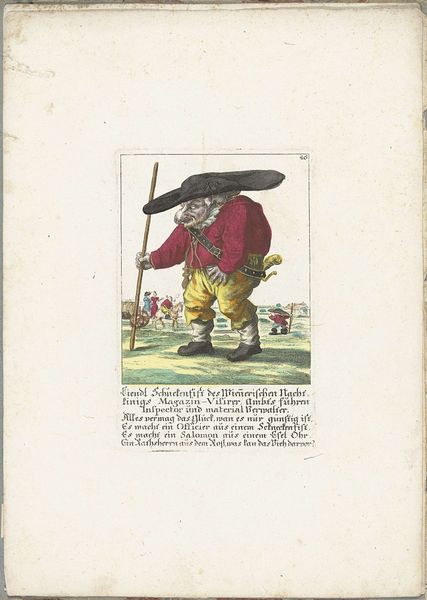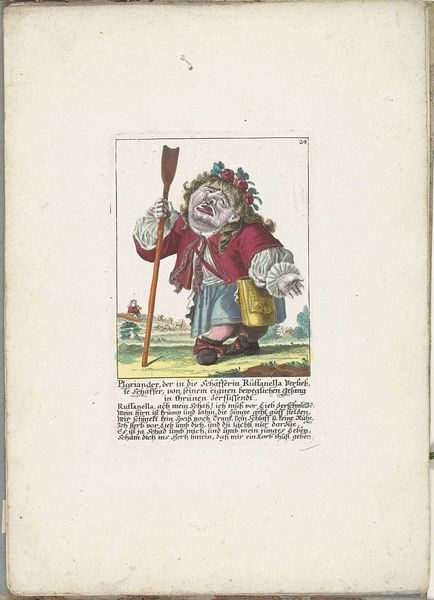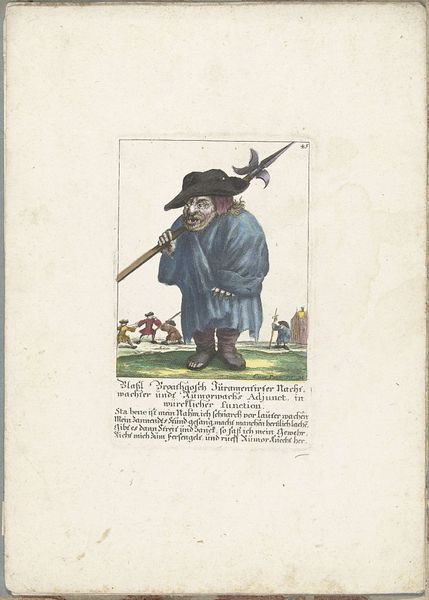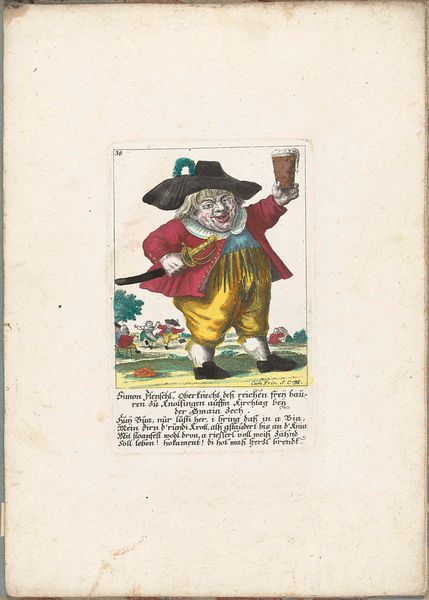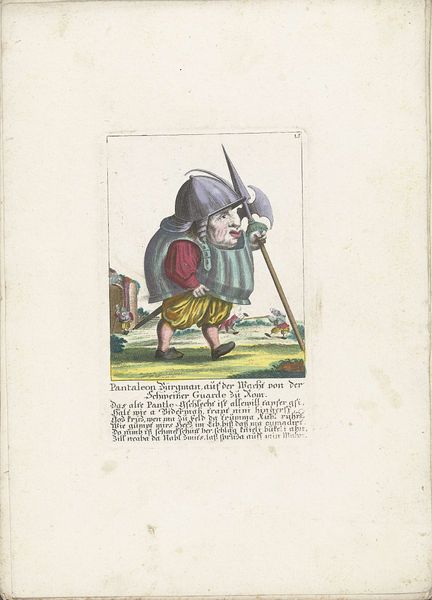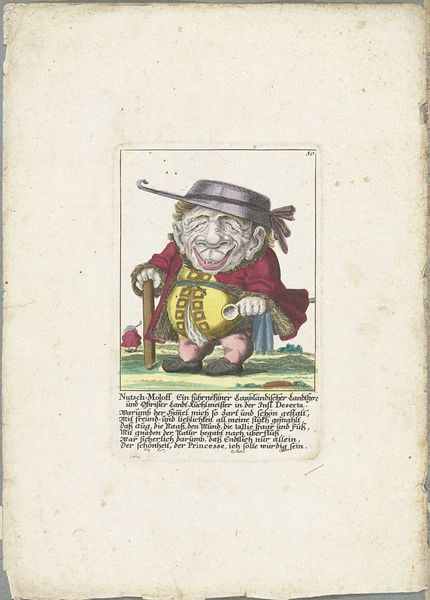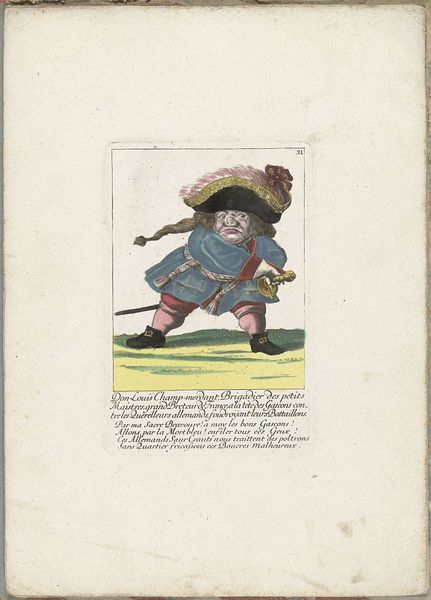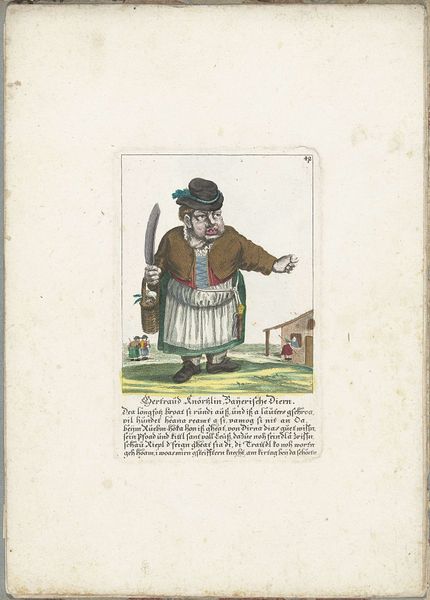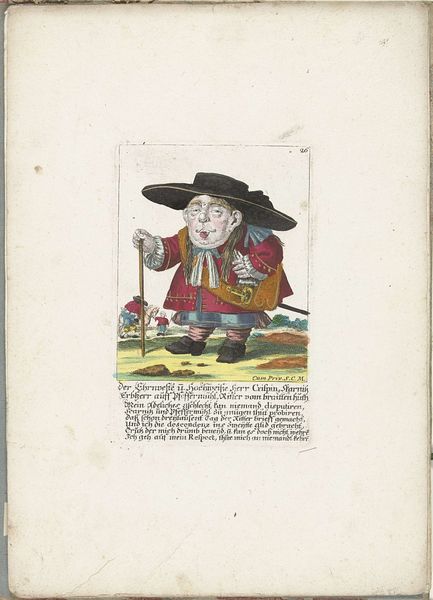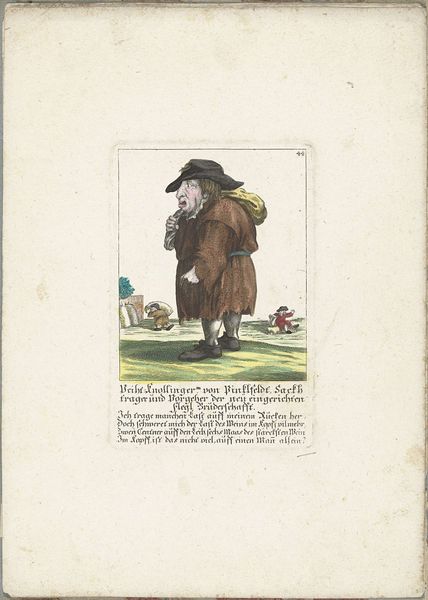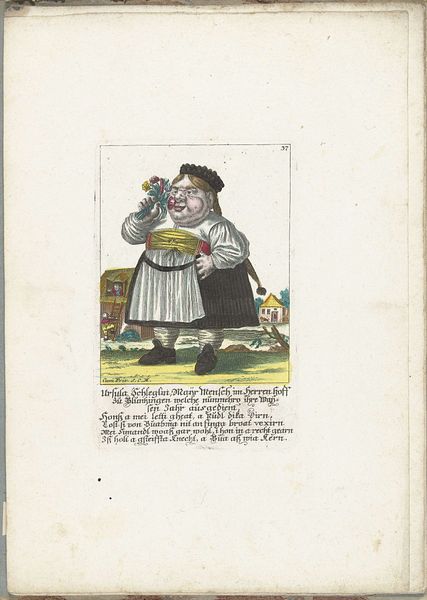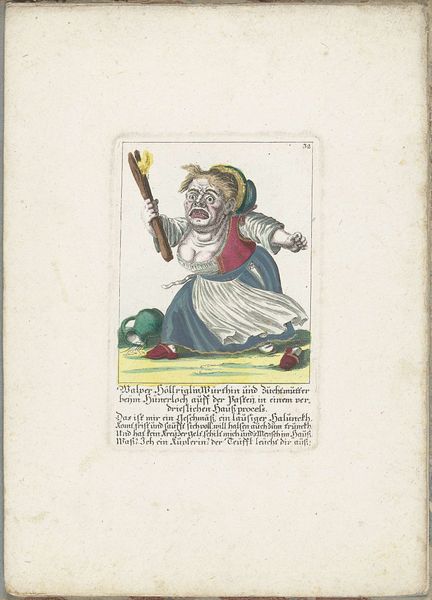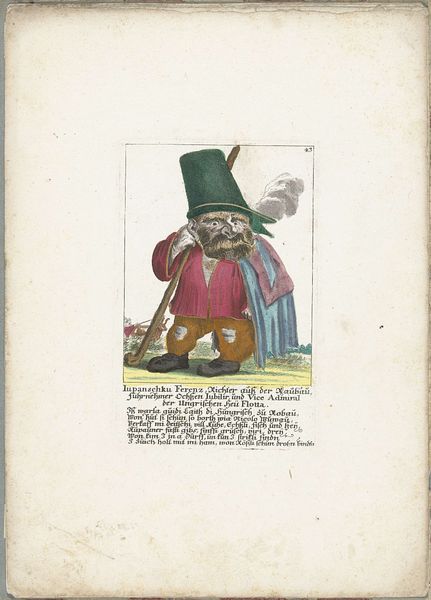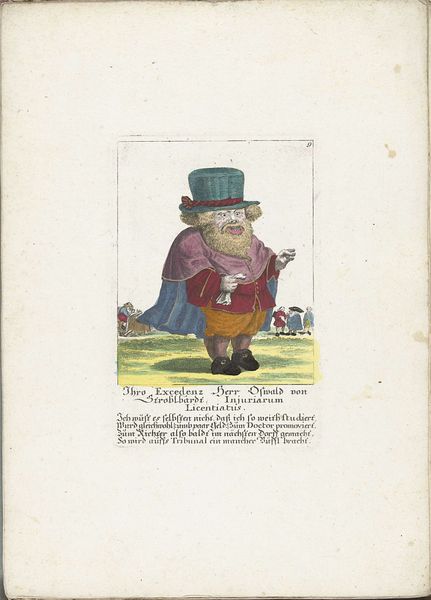
print, etching
#
baroque
# print
#
etching
#
caricature
#
genre-painting
Dimensions: height 170 mm, width 110 mm, height 320 mm, width 225 mm
Copyright: Rijks Museum: Open Domain
Martin Engelbrecht created this etching of Mathias Flecksippl around 1710. Observe the figure's distinctive cap, a symbol of status and perhaps profession, echoing similar headwear found in Renaissance depictions of scholars and dignitaries. This simple accessory, a marker of identity, reappears across time, each instance subtly altered by prevailing cultural winds. Consider the Phrygian cap, donned during the French Revolution as a symbol of freedom, its roots tracing back to ancient Thracian origins. Such objects tap into a collective memory, their forms and meanings evolving, yet retaining vestiges of past significance. The figure’s exaggerated features and stance speak to a deeper psychological undercurrent—a release of societal tensions through caricature, engaging us with the primal, subversive power of humor. This reminds us that cultural symbols are far from static; they possess an agency, a life of their own, continuously shaped by the currents of history and the human psyche.
Comments
No comments
Be the first to comment and join the conversation on the ultimate creative platform.
